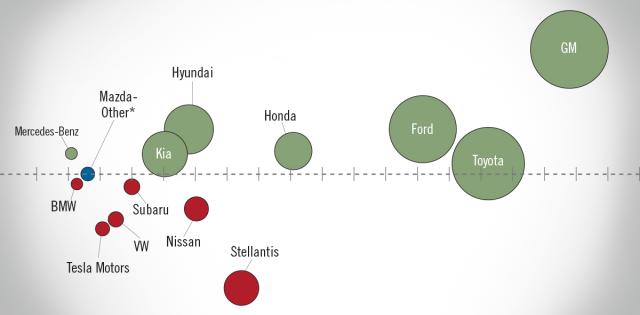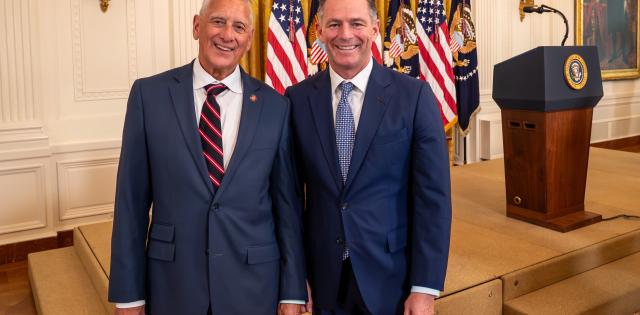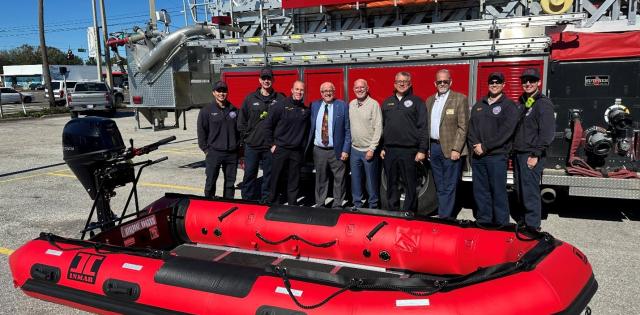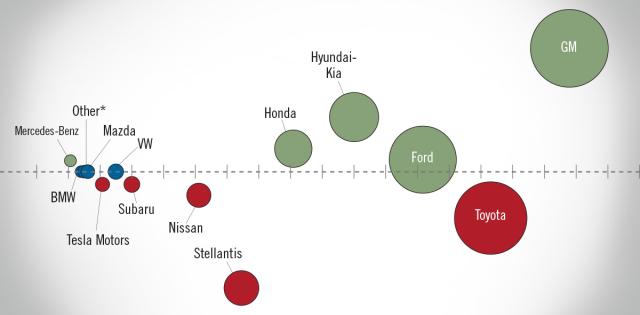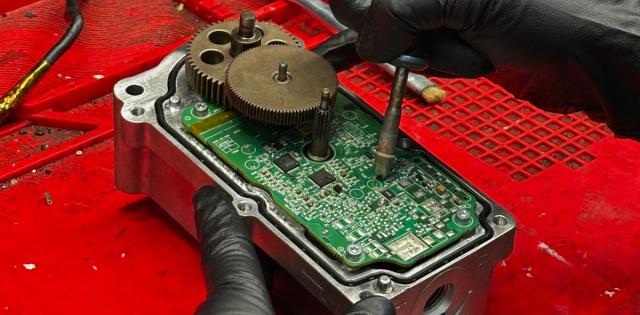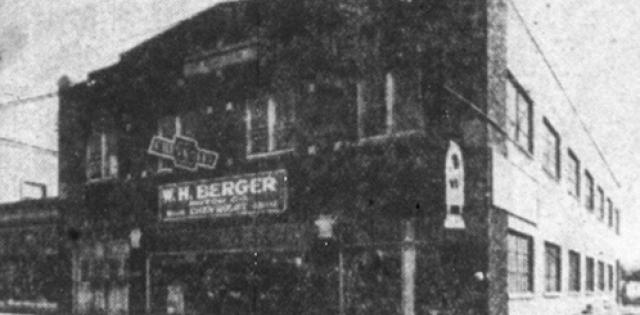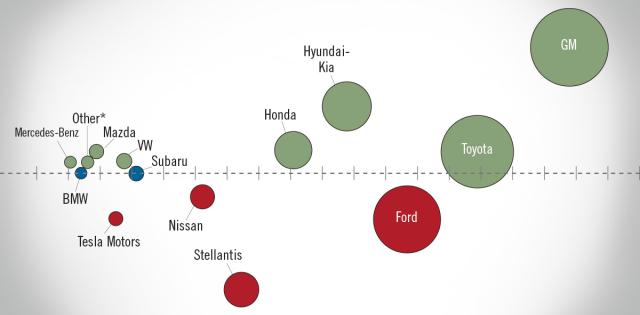The article below is sourced from Bloomberg Wire Service. The views and opinions expressed in this story are those of the Bloomberg Wire Service and do not necessarily reflect the official policy or position of NADA.
General Motors Co., Ford Motor Co. and Stellantis NV are bracing for more walkouts Friday as the carmakers remain far apart from the United Auto Workers on key issues, including job security and pay parity for temporary workers.
UAW President Shawn Fain vowed to expand the strike to more plants if there wasn’t substantial headway made after the first week. He’s already taking a more aggressive stance than his predecessors — targeting all three of Detroit’s legacy automakers at the same time. He’ll announce the union’s next steps at 10 a.m. local time.
While the parties continued bargaining on a new contract this week, negotiators on both sides say there’s a long way to go. GM Chief Executive Officer Mary Barra told salaried staff on Sept. 20 that the UAW’s latest counteroffer was still too expensive. The companies are offering around 20% pay raises over four years, while the UAW is demanding a 36% boost. At Stellantis, some of the union’s most important demands have yet to be addressed, according to Mike Hayes, a member of the UAW’s bargaining committee.
“It’s about job security and product,” Hayes said in an interview outside Stellantis’ North American headquarters. “We need to keep jobs in this country. They are taking billions in tax incentives but when it comes to keeping jobs here, they won’t guarantee anything.”
An expanded strike could ratchet up pressure on the carmakers to reach a deal. Fain’s strategy has been to keep the companies guessing about his next move. But more members walking on also poses a risk to the union in the form of a diminished strike fund.
The first walkout targeted plants that make popular and profitable sport utility vehicles and trucks, but it spared factories that produce cash cows such as the Ford F-150, Chevrolet Silverado and Ram pickups. On Sept. 15, almost 13,000 workers walked out of a Ford plant in Michigan that makes Bronco SUVs, a GM factory in Missouri that assembles Chevrolet Colorado trucks, and a Stellantis plant in Ohio that builds Jeep Wrangler SUVs.
The three carmakers have responded with layoffs of non-striking workers, citing what they’ve described as spillover effects of the walkouts. At the same time, some suppliers say they expect only a limited effect on their business.
Shares of GM and Ford have seen steep declines since July and are underperforming the broader S&P 500 this year. In the first seven days of the strike, GM and Ford shares fell about 3%. Stellantis is an outlier with a 36% gain in its US share price this year, including a 2.6% increase over the past week.
The strike is currently costing the companies output of about 3,200 vehicles a day, according to S&P Global Mobility. The carmakers have said they’re developing contingency plans for further work stoppages.
At GM, the union has been pressing hard on cost-of-living adjustments, which protect workers from inflation, said a person familiar with talks. The company sees it as part of a total pay package, where the union wants these adjustments on top of a pay raise. The UAW also wants more vacation time, which adds to the tension over temporary workers, the person said.
Ford presented its most recent offer to the UAW on Sept. 12, before the strike. The union has said it had “reasonably productive” negotiations with the company this past weekend.
Stellantis gave a revised proposal to the UAW on Sept. 19. The union is still worried about job security due to the potential closing of 18 Stellantis facilities, including 10 parts and distribution centers. The company says no jobs would be eliminated in the consolidation of parts centers, but the union has balked at the disruption these moves would cause. The carmaker has also floated turning an idled Jeep plant in Belvidere, Illinois, into an Amazon-like hub for parts distribution, according to a person familiar with the matter.
“Nobody really wants to go out on a strike, but it’s kind of like going to war,” said said Donald Alston, a Stellantis Sterling Heights Assembly Plant employee in Michigan. “You do it because it’s necessary.”
For more stories like this, bookmark www.NADAheadlines.org as a favorite in the browser of your choice and subscribe to our newsletter here:


